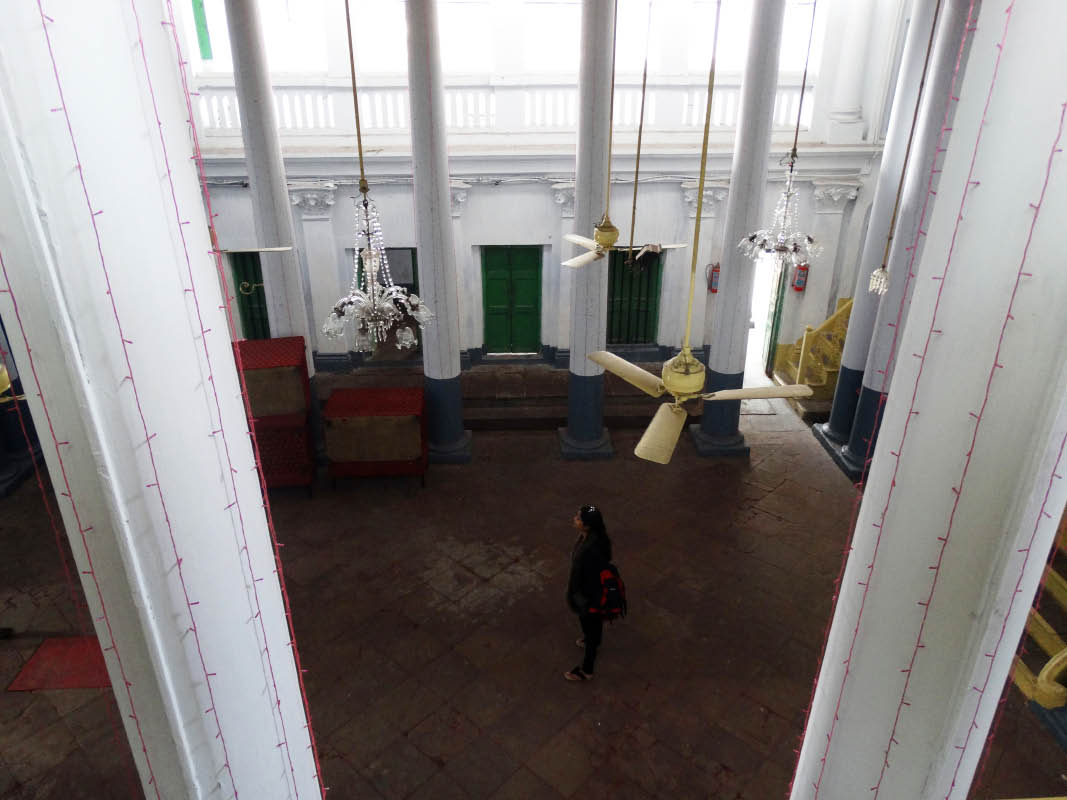“Believe me, when I came to Baghbazaar in Kolkata, I had an uncanny feeling of entering into a time capsule, whose time goes back to the days of Tawaifs, their kothas, their thumris and their ghungroos.
“Those were the days when Hindustani culture was getting redefined in East India Company’s Calcutta. I feel I see Ghungroo-chained legs of Tawaifs quivering on the dancing floors rendering Kathak in its finest form. I feel I see Zeenat Bai, one of the Paris (angels) of Nawab Wajid Ali Shah of Oudh, welcoming Rajas, Maharajas, Sultans, Nawabs and Zaminders at Sham-e-Mehfil in her Kotha at Baghbazaar.”
Baghbazaar in Zeenat’s time, Zarina Khan said, was vastly different from how it appears today. Sprawling baganbaris and jalsaghars (mansions of Bengali zamindars) and massive kothas of Tawaifs dotted Baghbazaar.
Zarina Khan came to Kolkata from Boston to learn about the Tawaifs. Zeenat died in 1898, the year when the first gramophone record of India was released in Calcutta. She came to Calcutta with the entourage of Wajid Ali Shah in 1856 along with nearly 168 Tawaifs and helped spread Sham-e-Mehfil culture in Calcutta.
A software developer by profession, Zarina is researching the contribution of Tawaifs to Indian culture in the development of classical Hindustani ragas and Kathak. She is gathering materials on the bygone days of Baboo Culture of Bengal.
Zarina is trying to locate the ancient kothas of Baijis and Tawaifs in different parts of Kolkata. Zeenat Bai’s Kotha has been consumed by the concrete jungle of Baghbazaar. Zeenat was the great grandmother of Zarina’s mother. Zarina left Calcutta for Boston when she was two years old with her surgeon father and mother. Now she has an irresistible attraction to the world of Tawaifs.
Many Bollywood movies — Devdas, Sahab Biwi Ghulam, Pakeezah, Amar Prem, Umrao Jaan — have celebrated Tawaifs. Satyajeet Ray’s celebrated film Jalsaghar is a vibrant celluloid tribute to the days of Bengali Zamindari and the ascendancy of Tawaifs.
No wonder, when Madhuri Devi Singh (perhaps the last surviving Tawaif who performed regularly at her Kotha in Kolkata’s Bowbazaar) attended the Kathak Festival in San Francisco in 2006, she was thronged by overseas Indians.
Tawaif is one of the most misunderstood Urdu words. Today it is applied to harlots or prostitutes, but few realize that classical Hindustani music and dance was refined in the kothas of Tawaifs. Royalty regarded them as icons of culture. One could not easily become a Tawaif in those days, as a lady would have to learn not only Kathak and classical ragas, but also master royal etiquettes. Few ladies made it as Tawaifs.
After Wajid Ali Shah, the tenth and last nawab of Awadh, was exiled to Calcutta, the culture of Sham-e-Mehfils spread rapidly. The nawab created a “Second Lucknow” in Metiaburz in Calcutta. A large number of talented Baijis and Tawaifs thronged to Metiaburz. Some established their own kothas in Belgachia, Shyambazar, Sovabazaar, Chitpur, Mullick Bazaar, Baghbazaar, Bow Bazaar, Khidirpore and other areas of Calcutta. The Tawaifs who came to Calcutta, mostly originated from Lucknow, Kanpur, Benaras and Allahabad. They helped Wajid Ali Shah perfect his own ragas, such as juhi, jogi and shah-pasand.
Tawaifs played key roles in India’s first gramophone record in Calcutta in 1898. The Gramophone and Typewriter Limited (later HMV or His Master’s Voice) took initial recording of songs from Tawaifs, nautch girls, Baijis and Kothewalis.
Until 1976, “Jalsas” (evening dance and music programs) were held regularly in Calcutta. The golden era of Tawaifs has evaporated from today’s Kolkata. A large number of beautiful kothas of Tawaifs are now occupied by people who have little to do with thumri, honeyed ghazals and Kathak. And the meaning of Tawaif itself has transformed.
Now you don’t find Tawaifs in Kolkata, but some of the concrete structures of their kothas, jalsaghars, baganbaris and havelis where Sham-e-Mehfils once held forth still survive. The culture that they perfected during the period of decline of the Mughal Empire and its transition to the British era lives on in the form of modern-day ragas and Kathak.
The first blow to Tawaifs was the partition of India in 1947. A large number of them migrated to Pakistan. The second major blow came in 1955 when the zamindari system in West Bengal was abolished. The family members of many rich Tawaifs started business ventures in Calcutta. Some moved to Mumbai and Delhi to lead lives as teachers of dance and music. Many educated children of Calcutta’s Tawaifs migrated abroad, mainly to USA, Canada, England, Australia and New Zealand.
Tawaifs are a distant memory now. But Indian culture stands indebted to them. Let us hum in memory of Tawaifs the vintage song of Geeta Dutt of Sahab, Biwi Aur Ghulam: “Koi Door Se Awaz De, Chale Aao….
Photos: Abhishek Home Chowdhury


You must be logged in to post a comment Login